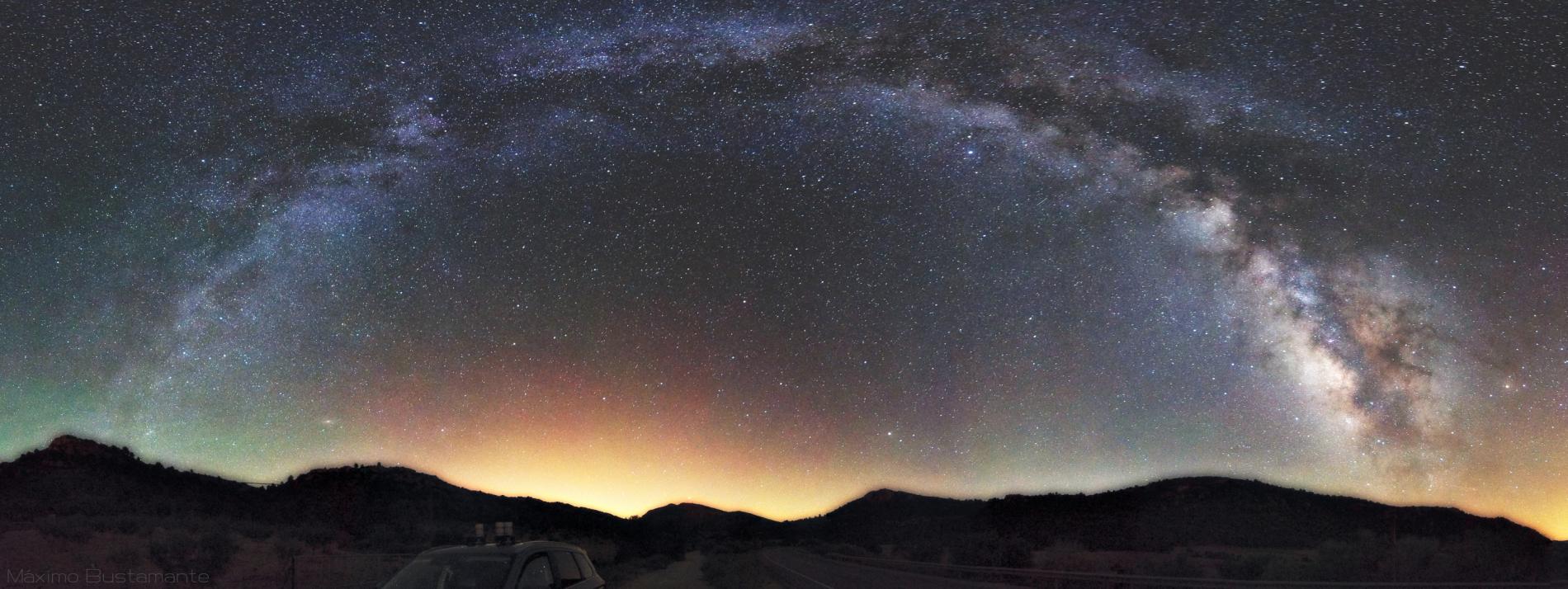The sky of the Granada Geopark, threatened by light pollution
A study, developed by the Sky Quality Office of the Institute of Astrophysics of Andalusia (IAA-CSIC), reveals a deterioration of the Geopark sky, as well as the need to implement measures to preserve night darkness
The Sky Quality Office (OCC) of the Institute of Astrophysics of Andalusia (IAA-CSIC) has completed a study on the quality of the night sky in the Geopark of Granada, which shows that there has been a significant increase in light pollution in the region, due to both private infrastructures and public lighting. The work indicates, however, that the Geopark continues to maintain a high percentage of its surface area with optimum sky quality, and highlights the importance of reversing the trend towards increasing night-time lighting in order to preserve the dark sky, which is a scientific, cultural and tourist resource.
The work was commissioned by the Diputación Provincial (Provincial Council) from Granada, the institution that holds the presidency and technical secretariat of the Geopark Coordination Committee. Thanks to it, the Procincial Council has the possibility of requesting night sky quality certifications for those areas that meet the requirements of the entities that grant them, and in this way guarantee compliance with a series of standards for the protection of the sky against the threat of light pollution.
"The request for these quality seals is due to the need to preserve the night sky as part of the natural heritage of this area, and the development possibilities associated with astro-tourism and scientific activity in the rural environment. With this study, the Office provides the Provincial Council and the Geopark town councils with an assessment of the impact of their outdoor lighting, to help them make decisions to reduce light pollution in a real way", says Susana Martín-Ruiz, the IAA-CSIC researcher who heads the study.
The scientific team has studied the light emissions of urban centres using a methodology that combines measurements of brightness on the ground in different filters with remote data taken from various sources, both from satellites (VIIRS, JL1 and SDGSAT-1) and photographs taken from the International Space Station, being a pioneering work in the use of images from all the satellites available to date for this type of research.
Thanks to the calibration of the remote images carried out by Alejandro Sánchez de Miguel, a researcher at the Complutense University of Madrid who is participating in the study, it has been possible to characterise the pollutant sources and contrast them with the inventories of public lighting. In addition, a geostatistical analysis has been carried out and a series of sky brightness maps have been drawn up with measurements in different filters taken from the ground and from space.
The results show that there has been a very significant increase in emissions, especially in the blue band. They highlight, on the one hand, the enormous contribution of private infrastructures, which together pollute as much as the city of Guadix, and on the other hand, a shift to blue in lighting, more pronounced in small urban centres.
This shift to blue is due not only to the replacement of sodium vapour lamps in street lighting by LEDs with a cooler colour temperature (as corroborated by the public inventory), but also to excessive lighting of entrances, roundabouts or small footpaths, as well as ornamental lighting (churches, facades or monuments at night when there is no traffic at all). "The results are worrying, not only because of the fact that the intensity of lighting is not adequate, in the necessary places and at the necessary times, but also because of the harmful effect on ecosystems and human health of the blue light emitted by the recently installed LED luminaires", says Máximo Bustamante-Calabria, a technician at the IAA-CSIC's Sky Quality Office and co-author of the study.

Despite the increase in light pollution in the region, 42% of its surface area retains conditions that would make it a candidate for the highest quality certifications, and 11% has exceptional conditions that are difficult to find on the Iberian Peninsula. This is why it is so important to reverse the growing trend of light pollution in this area.
"Certifications can be a tool to reverse the problem of the unstoppable increase in light pollution, even in the areas furthest away from large cities where the darkest night landscape is also threatened by the poor management of both public and private lighting in small towns", concludes Susana Martín-Ruiz (IAA-CSIC).
The Geopark territory covers an area of 4722 square kilometres in the northeast of the province of Granada, and includes 47 municipalities belonging to the regions of Guadix, Baza, Huéscar and Los Montes. It belongs to the European Geoparks Network and has been declared a UNESCO World Geopark in July 2020 for its beautiful landscapes and geological singularities that make it unique. The area is characterised by its great geological, geomorphological and palaeontological wealth from the Quaternary.
S. Martín-Ruiz, M. Bustamante-Calabria, A. Sánchez de Miguel, Geoparque de Granada. Estudio de la calidad de su cielo nocturno.
The remote images used in the study can be viewed interactively at the link: https://pmisson.users.earthengine.app/view/geoparque-de-granada-de-noche
Instituto de Astrofísica de Andalucía (IAA-CSIC)
Unidad de Divulgación y Comunicación
Silbia López de Lacalle - sll[arroba]iaa.es - 958230676
https://www.iaa.csic.es
https://divulgacion.iaa.csic.es

